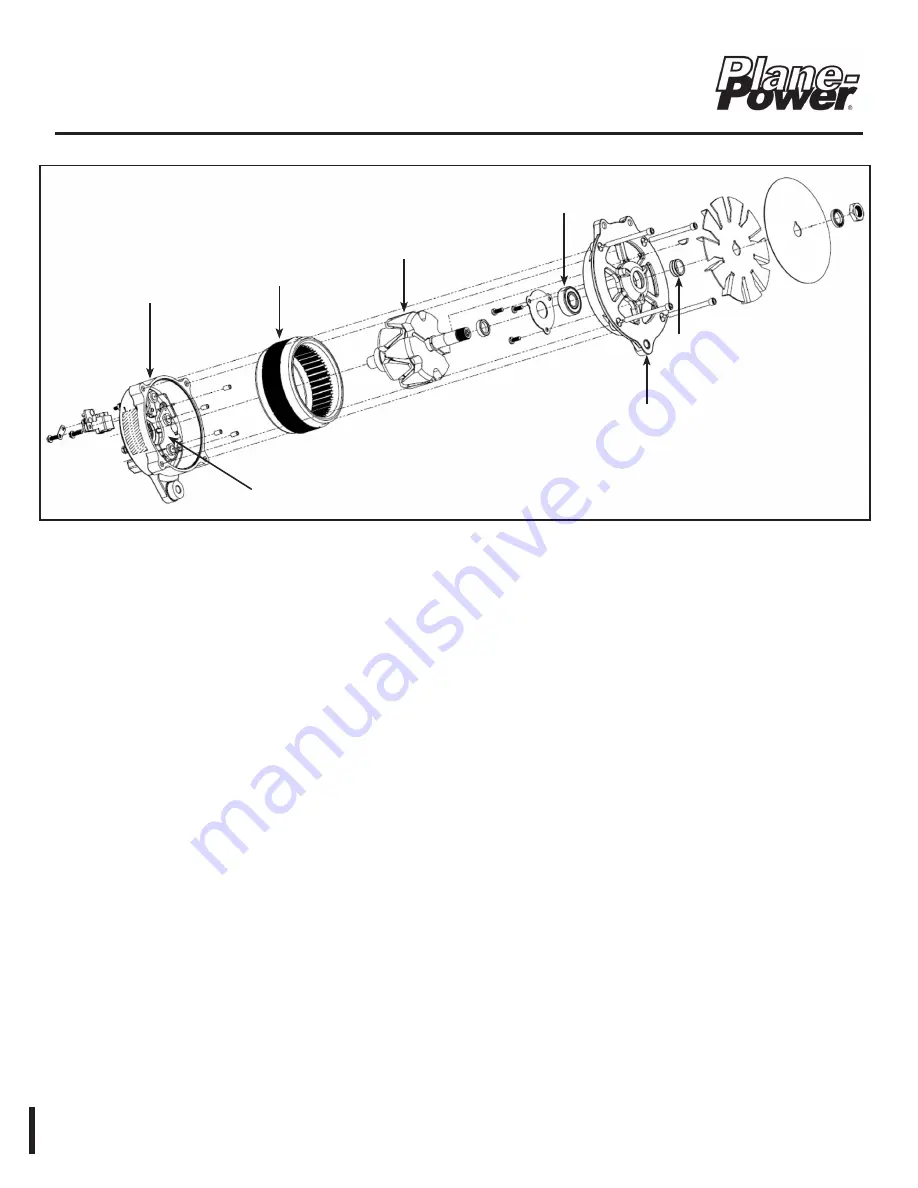
2.5 Theory of Operation
A. Power to drive the alternator is derived from the aircraft powerplant by means of a belt for belt-driven type
alternators and by means of a gear for direct-driven type alternators. Torque in transmitted though the drive to
the alternator rotor shaft resulting in rotor rotation.
B. During operation, the F1 terminal is electrically excited by an external voltage regulator. The F2 terminal is
either electrically connected to the SRE housing (ground) internal to the alternator, externally at the alternator,
or remotely by means of the aircraft electrical system. As current flows through the rotor coil a magnetic field
is created with lines of flux being concentrated between the pole-shoe fingers. As the rotor turns these lines
of flux are swept over the stationary stator coil windings inducing an alternating current flow within them.
This three-phase alternating current is conducted to the bridge rectifier circuit which converts the alternating
current to direct current. This rectified, DC current is made available to external loads via the +B terminal.
2.6 Self Excitation Description
A. The HET alternator model ES-10024B-5 (-5LS), when used in conjunction with an ACU (alternator control unit)
that is designed to “boot strap” field voltage during low speed operation, has the ability to self-excite. In other
words, the alternator/ACU system has the ability to generate power, even in the absence of battery voltage,
i.e. in “batteryless” systems, or those in which the battery is not always connected to the alternator.
B. Self-excitation ability derives from residual magnetism in the rotor pole pieces. A minimum generated voltage
is necessary to power the ACU and begin normal alternator regulation. Self-excitation is available only on the
ES-10024B-5 and -5LS.
Figure 2.22 - Alternator Exploded View (typical)
Brush Holder
Assembly
Slip Ring End
(SRE) Housing
Rectifier Assemby
Stator
Assembly
Rotor
Assembly
Drive End
(DE) Bearing
Drive End (DE)
Housing
Shaft Spacer and
O-Ring Assembly
Aircraft Alternator
Maintenance Manual
ES1031
24-30-01
Rev. B: 20 Apr. 2022
Page: 2-17
© 2022 - Hartzell Engine Technologies - All rights reserved
















































